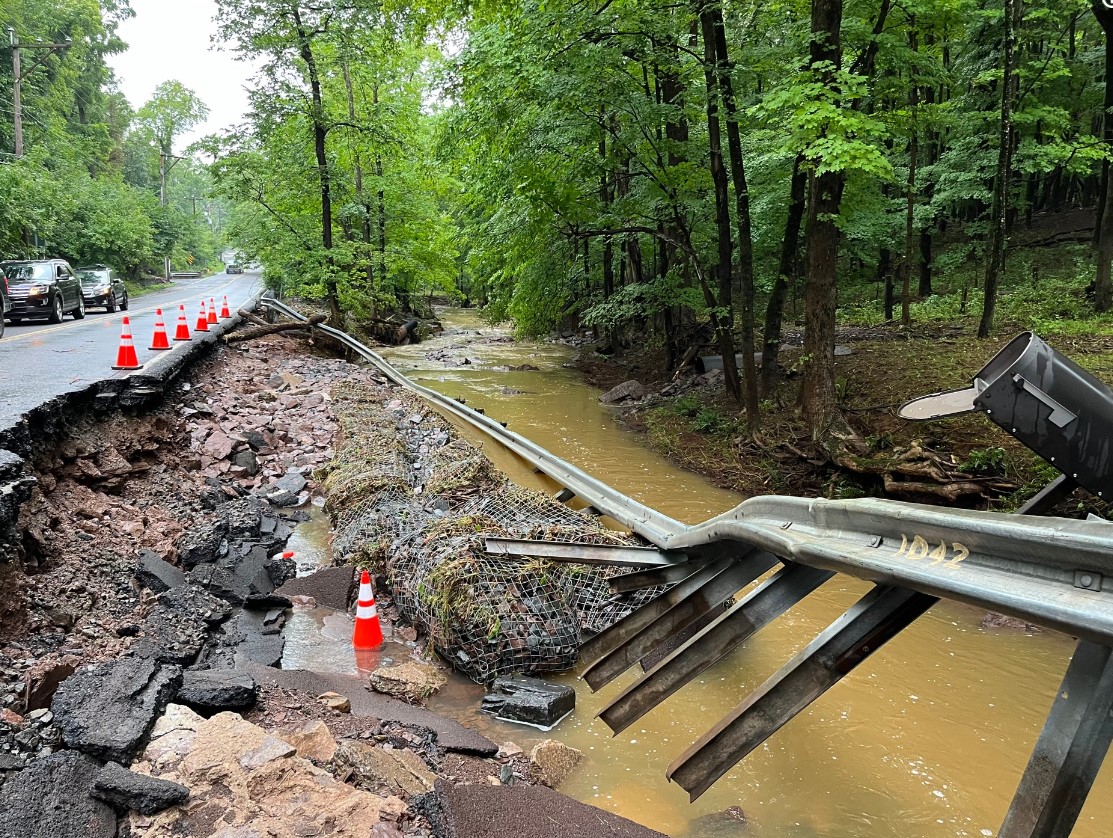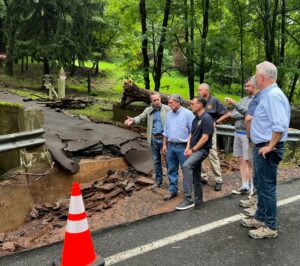Bucks County No Stranger to Severe Flooding

Five people died from flash floods in Upper Makefield Township in Bucks County on Saturday evening. On Monday, searchers continued looking for a missing baby and a 2-year-old child.
“With these five deaths, this is a mass casualty incident the likes of which we have not seen before,” the Upper Makefield Police posted on Facebook. “This has been unbelievably devastating to all the families involved, all of our first responders, and to our community as a whole. We are all grieving over the loss of life we have seen. However, our commitment to finding the two children who are still missing is unwavering as we will do all that we can to bring them home to their loved ones.”
On Monday, first responders used teams on foot and in boats, divers in the Delaware River, as well as drones and sonar technology trying to locate the children.
Police said their mother is among the five victims, and the family was visiting the area from Charleston, S.C. Officials said the father, a 4-year-old brother, and a grandmother survived.
“I got to thank many of the first responders who have been working around the clock to rescue those caught in a flash flood on Washington Crossing Road in Upper Makefield last night,” State Sen. Steve Santarsiero (D-Bucks) said in a statement.
“I joined Upper Makefield Township Supervisor Ben Weldon, Bucks County Commissioners Bob Harvie and Diane Marseglia, state Rep. Perry Warren, Gov. Josh Shapiro, and Sen. Bob Casey on a tour of the damage to Washington Crossing and Taylorsville roads. Our prayers are for the family, friends, and neighbors of the five who lost their lives and the two young children still missing.
I will continue to work with local, state, and federal officials to restore the roadways.”

Officials, including Gov. Josh Shapiro (center), look at flash flood damage.
Bucks County is no stranger to severe flooding. According to the Neshaminy Valley Watershed Association, historical records cite a terrible flood on July 17, 1865, caused “several deaths,” flooded homes, and washed away thousands of dollars of crops.
According to the Delaware River Basin Commission, another severe flood struck on Oct. 11, 1903, washing away nine wooden bridges across the Delaware River.
Hurricane Diane caused a monumental flood in 1955 on Aug. 19 and 20 of that year. That flood destroyed or damaged several bridges and left 1,000 people homeless.
Other significant Bucks County floods happened in 1999 when Hurricane Floyd hit the area, dumping 10 inches of rain on Doylestown. The Tohickon Creek crested at 11.84 feet in Pipersville, and the Neshaminy Creek in Langhorne crested at 21.91 feet. Floyd killed eight people in southeastern Pennsylvania and flooded 1,000 homes.
In June 2001, Hurricane Allison dumped the most rain on Bucks County since Floyd. The Neshaminy Creek crested at 17 feet, twice its flood stage. There were widespread power outages as well.
In 2021, Hurricane Ida brought three tornadoes and flooding to Bucks County. One person died.
While most severe floods resulted from tropical storms or hurricanes that came up the East Coast, the latest flooding was due to moisture in the atmosphere, said AccuWeather meteorologist Mary Gilbert.
“Too much rain came down too fast,” she explained. She said Saturday evening’s storm resulted in a 500-to-1,000-year flood. “There is a very low chance of it happening again. It was a very abnormal event. It’s something not likely to happen frequently.”
But if people hear news reports of flash flooding, they need to be cautious and avoid those areas.
“It can happen fast when it does happen,” said Gilbert. “It’s incredibly dangerous.”
Upper Makefield Township was declared a disaster emergency. Residents with property damage were asked to call the township, and people were warned not to go around barricades to try to drive on closed roads.
Please follow DVJournal on social media: Twitter@DVJournal or Facebook.com/DelawareValleyJournal


